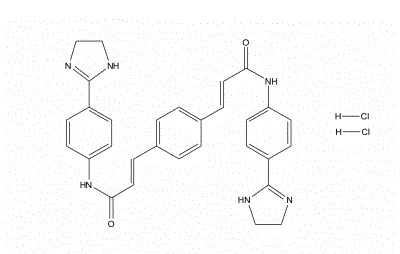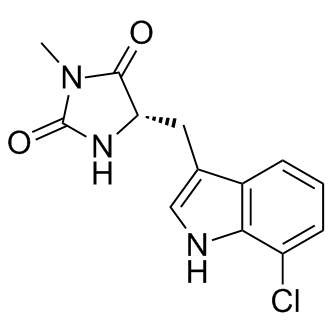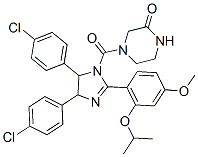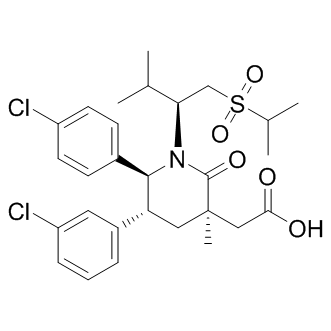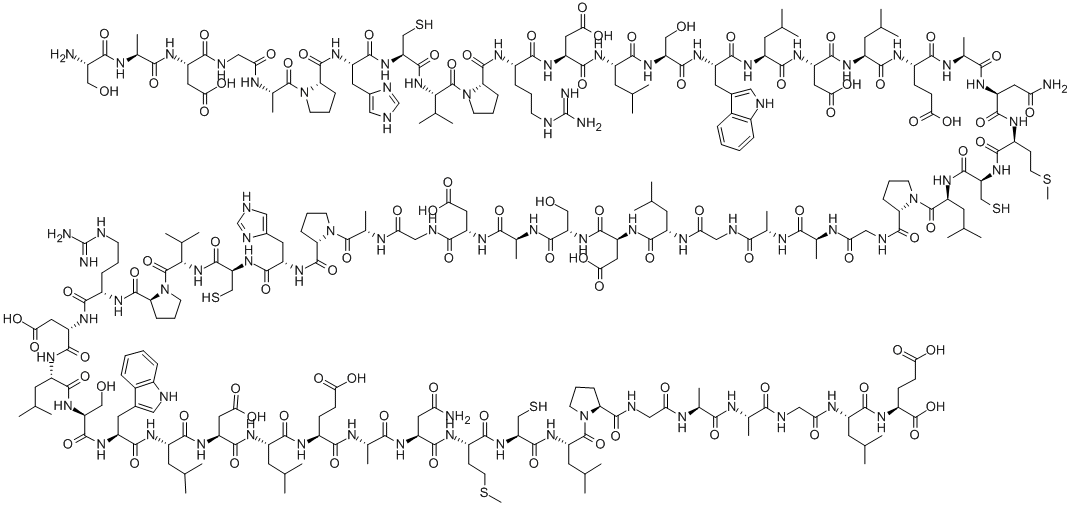Apoptosis
There are many forms of cell death, most of which can be triggered by a variety of stimuli and physiological conditions. The often compared are apoptosis and necrosis. Apoptosis has become the focus of research area due to its complex nature and the different roles of maintaining healthy and self-sustaining biological entities. On the other hand, necrosis is a form of cell damage against acute external injury and trauma, leading to passive cell death and causing an inflammatory response. [1]
The BCl-2 family has been identified as its important role in apoptosis. The BH domain promotes interaction of family members with one another and may be indicative of pro-apoptotic or anti-apoptotic functions. Usually the BCL-2 family have been classified into one of three subfamilies; anti-apoptosis, BH3 only (pro-apoptotic) and pro-apoptotic proteins. The great promise for cancer therapy has been shown in recent research about BCL-2 targeting.[2]
In the cell cycle, apoptosis acts as a fail-safe measure to prevent fidelity and proliferation quality. Although a certain degree of genetic variation is allowed and evolution is promoted, regenerative cells with extensive genetic errors and cell damage are subject to apoptosis. P53 is the Key role in the cell cycle system which initiate the apoptosis in certain cell types. P53 is a widely studied tumor suppressor. The p53 tumor suppressor gene is most frequently mutated in cancer cells (mutation occurs in more than 50% of human cancers) [3], which makes the restriction mechanism ineffective. Tumorigenesis is likely to commence when the p53-based preventive system loses its function completely.
Expression of stimuli, such as DNA damage, hypoxia and activation of certain oncoproteins (eg, Myc, Ras) are dependent on the apoptotic pathway of p53 [4]. The transactivation function of p53 plays an important role in inducing apoptosis, the pro-apoptotic proteins, Bax and lgF-Bp3, are transcriptional targets of p53.[5] As a well-known tumor suppressor, p53 is recognized for its ability to initiate apoptosis in the cell cycle and its ability to induce cell arrest and DNA repair in regenerative cells. In addition to p53, there are many other cell cycle regulators that can affect apoptosis (eg, pRb, p21).
Many studies have emphasized the importance of apoptosis in the self-defense mechanism or immune system. The immune system is responsible for rendering the host resistant to a variety of external pathogens. Apoptosis is an integral part of the immune system and helps maintain the homeostasis of the immune system. Secondly, the immune system relies on apoptosis to eliminate unwanted functional maturation of T cells and B cells [6]. Finally, apoptosis confers cytotoxicity to certain cell types (ie, cytotoxic T lymphocytes and natural killer cells). A well-coordinated disruption protocol allows these cells to destroy target cells while the target cells remain intact. Cytotoxic T lymphocytes (CTLs) can induce target cell death in two ways, one of which involves perforin and granzymes.
- Majno G. and Joris I. (1995) Apoptosis, oncosis, and necrosis. An overview of cell death. Am. J. Pathol. 146, 3–15
- Zhiqing Liu, et al. Drug Discov Today. 2016 Jun; 21(6): 989–996.
- Wang X.W. and Harris C.C. (1997) p53 tumor-suppressor gene: clues to molecular carcinogenesis. J. Cell. Physiol. 173, 247–255 10.1002/(SICI)1097-4652(199711)173:2%3c247::AID-JCP30%3e3.0.CO;2-A.
- Levine A.J. (1997) p53, the cellular gatekeeper for growth and division. Cell 88, 323–331 10.1016/S0092-8674(00)81871-1.
- Owen-Schaub LB,et al. Owen-Schaub LB,Wild-type human p53 and a temperature-sensitive mutant induce Fas/APO-1 expression. Mol Cell Biol. 1995 Jun; 15(6):3032-40.
- Russell J.H. (1995) Activation-induced death of mature T cells in the regulation of immune responses. Curr. Opin. Immunol. 7, 382–388 10.1016/0952-7915(95)80114-6.
-
RG7112
Catalog No. A11523 -
Pifithrin-β
Catalog No. A22006 p53 inhibitorPifithrin-β (PFT β) is a potent p53 inhibitor with an IC50 of 23 μM. 了解更多 -
Lenalidomide (CC-5013)
Catalog No. A10522 Ubiquitin ligase inducerLenalidomide (CC-5013)是Thalidomide的衍生物。在体外,Lenalidomide具有三种主要活性:直接抗肿瘤作用、抑制肿瘤细胞的微环境支持和免疫调节作用。它通过抑制骨髓基质细胞支持、抗血管生成和抗破骨细胞生成作用以及免疫调节活性直接和间接诱导肿瘤细胞凋亡。 了解更多 -
QNZ (EVP4593)
Catalog No. A12748 -
Pomalidomide (CC-4047)
Catalog No. A10743 TNF-alpha 抑制剂Pomalidomide (CC-4047)是沙利度胺的衍生物,在PBMCs中IC50为13 nM,并起免疫调节剂的作用。 了解更多 -
Necrostatin-1
Catalog No. A11973 RIPK1 抑制剂Necrostatin-1是一种与ATP竞争的,与受体相互作用的蛋白激酶1(RIPK1)的变构抑制剂(EC50 = 182 nM)。 了解更多 -
GW 4869
Catalog No. A11974 -
Necrostatin 2
Catalog No. A15183 -
Necrostatin 2 racemate
Catalog No. A15327 -
Necrostatin 2 S enantiomer
Catalog No. A15328 -
Thalidomide
Catalog No. A10924 -
AT-406 (SM-406, ARRY-334543)
Catalog No. A11163 IAP 抑制剂AT-406 (SM-406,ARRY-334543)是IAP家族蛋白质的口服生物利用抑制剂,具有潜在的凋亡诱导和抗肿瘤活性。AT-406选择性抑制IAP蛋白的生物学活性,包括X染色体连锁IAP(XIAP),细胞IAP 1(c-IAP1)和2(c-IAP2)和黑色素瘤凋亡抑制蛋白(ML-IAP)。 了解更多 -
BV-6
Catalog No. A14231 -
Birinapant (TL32711)
Catalog No. A12738 XIAP/cIAP1 拮抗剂Birinapant (TL32711)是第二个线粒体衍生的胱天蛋白酶(SMAC)激活剂和IAP(凋亡蛋白抑制剂)家族蛋白抑制剂的合成小分子和肽类似物,对cIAP1最有效,无细胞试验中Kd为<1 nM,具有潜在的抗肿瘤活性。 了解更多 -
GDC-0152
Catalog No. A14135 -
Apoptosis Inhibitor (M50054)
Catalog No. A13058 -
NSC-207895 (XI-006)
Catalog No. A11179 MDMX 抑制剂NSC-207895 (XI-006)是细胞可渗透的苯并呋喃化合物,可通过抑制MDMX启动子转录活性(IC50 = 2.5 ?M,下调MCF-7,LNCaP和A549细胞中的p53负调节剂MDMX蛋白水平(1至10 ?M,持续16至24 h)),导致增强的p53稳定和激活。 了解更多 -
Idasanutlin (RG7388)
Catalog No. A14211 -
(4R,5S)-nutlin carboxylic acid
Catalog No. A18924 Nutlin 3-based MDM2 ligand(4R,5S)-nutlin carboxylic acid (MDM2 ligand 2) is the Nutlin 3-based MDM2 ligand. (4R,5S)-nutlin carboxylic acid can be connected to the ligand for protein by a linker to form PROTACs. 了解更多 -
Nutlin carboxylic acid
Catalog No. A18917 Nutlin 3-based MDM2 ligandNutlin carboxylic acid (MDM2 ligand 1) is the Nutlin 3-based MDM2 ligand. Nutlin carboxylic acid (MDM2 ligand 1) can be connected to the ligand for protein by a linker to form PROTACs. 了解更多 -
PROTAC MDM2 Degrader-1
Catalog No. A18897 MDM2 degraderPROTAC MDM2 Degrader-1 is a MDM2 degrader based on PROTAC technology. PROTAC MDM2 Degrader-1 composes of a potent MDM2 inhibitor, linker, and the MDM2 ligand for E3 ubiquitin ligase. 了解更多 -
PROTAC MDM2 Degrader-2
Catalog No. A18890 MDM2 inhibitorPROTAC MDM2 Degrader-2 is a MDM2 degrader based on PROTAC technology. PROTAC MDM2 Degrader-2 composes of a potent MDM2 inhibitor, linker, and the MDM2 ligand for E3 ubiquitin ligase. 了解更多 -
PROTAC MDM2 Degrader-3
Catalog No. A18883 MDM2 degraderPROTAC MDM2 Degrader-3 is a MDM2 degrader based on PROTAC technology. PROTAC MDM2 Degrader-3 composes of a potent MDM2 inhibitor, linker, and the MDM2 ligand for E3 ubiquitin ligase. 了解更多 -
PROTAC MDM2 Degrader-4
Catalog No. A18877 MDM2 inhibitorPROTAC MDM2 Degrader-4 is a MDM2 degrader based on PROTAC technology. PROTAC MDM2 Degrader-4 composes of a potent MDM2 inhibitor, linker, and the MDM2 ligand for E3 ubiquitin ligase. 了解更多 -
MDM2 Inhibitor
Catalog No. A13582 -
MI-773 (SAR405838)
Catalog No. A14423 Mdm2 抑制剂MI-773 (SAR405838)是一种新的MDM2-p53相互作用的小分子抑制剂,以高亲和力(Ki = 0.88 nM)结合MDM2,并阻断p53-MDM2相互作用。 了解更多 -
NVP-CGM097
Catalog No. A16326 -
HDM201
Catalog No. A16834 -
Homoharringtonine
Catalog No. A14490 Stat3 抑制剂 & Apoptosis inducer同型harringtonine是一种头孢他辛生物碱,可抑制肝核糖体中二苯丙氨酸和乙酰苯丙氨酰嘌呤霉素的形成。 了解更多 -
Difopein
Catalog No. A14917

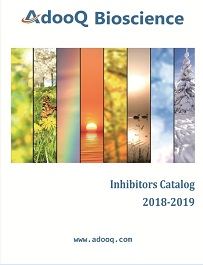

 微信关注
微信关注












